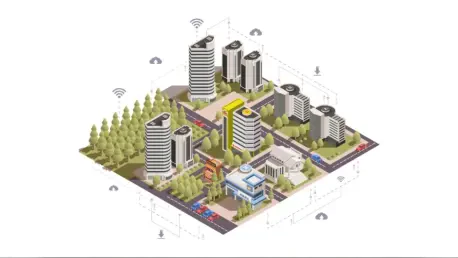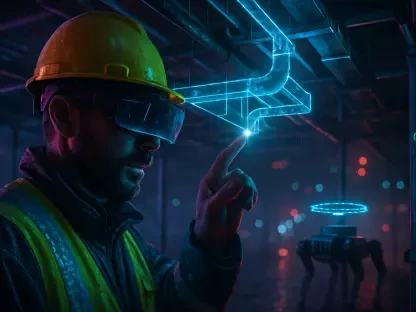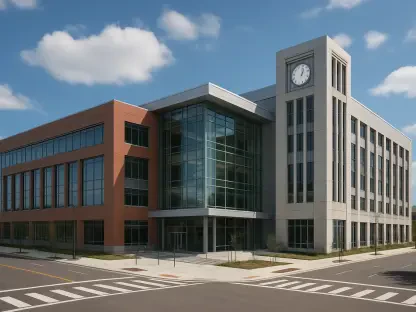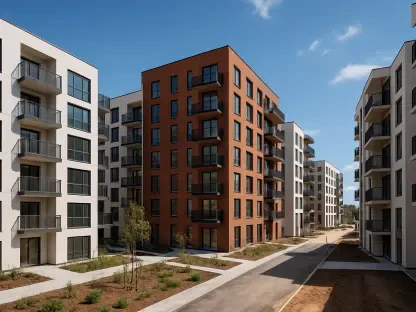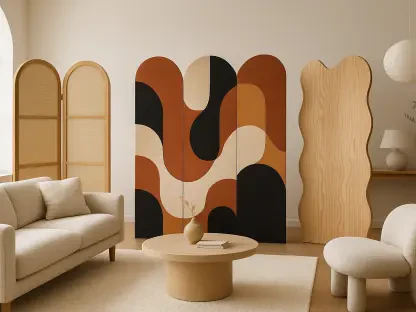In an era where climate change and sustainability dominate the architectural discourse, the FlectoLine façade system emerges as a groundbreaking innovation. This smart façade solution is engineered to enhance building energy efficiency by dynamically adapting to varying weather conditions. Developed in Germany, the FlectoLine represents a significant leap in architectural design, aiming to optimize energy consumption through a fusion of advanced technology and bio-inspired designs. With a decade of research culminating in this system, its development signifies a new-age architectural approach, merging technological advancements with principles derived from nature.
The Intersection of Nature and Technology
Bridging Biological Principles with Modern Design
The FlectoLine façade system exemplifies the intersection between nature and technology, fostering sustainable architecture. Developed collaboratively by German institutes, including the Institute of Building Structures and Structural Design (ITKE) and the Institute for Textile and Fiber Technologies (ITFT) at the University of Stuttgart, it marks a pivotal innovation. This interdisciplinary effort, known as the “Flectuation” project, integrates biological principles with cutting-edge technologies. By observing how organisms adapt to their environment, the team adeptly harnessed these insights to craft a dynamic adaptation of building exteriors.
Central to the FlectoLine’s operation are machine learning algorithms that drive adaptable mechanics. These algorithms enable the façade’s components to respond autonomously to changes in weather, adjusting thermal comfort inside buildings. For instance, the façade can regulate heat by folding to retain warmth or opening to provide shade, depending on external conditions. Moreover, integrated photovoltaic modules power these mechanisms, showcasing a sustainable energy solution. The photovoltaic modules not only foster energy efficiency but also symbolize the synergy between machine learning, sustainable energy, and bio-inspired design.
Inspiration from Nature’s Engineering Marvels
Nature’s engineering marvels prominently informed the design of FlectoLine. The waterwheel plant (Aldrovanda vesiculosa) and the striped bug notably influenced the system’s mechanics. The waterwheel plant, known for its precise mechanical movement to trap prey, mirrored the façade’s opening and closing flap mechanisms. The inspiration drawn from this plant emphasizes the potential of applying nature’s strategies to technological frames, highlighting the architecture’s organic connection with natural phenomena.
Similarly, the structural features seen in the wings of striped bugs, which offer varying stiffness for precise movements, influenced the material design of FlectoLine’s shading elements. These nature-inspired efficiencies are integrated into the FlectoLine’s materials, ensuring that architectural structures borrow from natural efficiency while maintaining the aesthetic appeal. This biomimetic approach is pivotal in the quest for energy-efficient solutions that contribute aesthetically to the urban environment.
Paradigm Shift in Architectural Trends
Embracing Biomimetic Design for Sustainability
One of the overarching themes surrounding the FlectoLine façade is the architectural industry’s shifting focus towards biomimetic designs. The FlectoLine epitomizes this paradigm shift, offering a framework that melds aesthetic beauty with functional efficiency. By studying organisms that adapt seamlessly to their surroundings, architects can derive insights into designing building exteriors that are both sustainable and stylish. This approach not only provides solutions to current environmental challenges but also sets new benchmarks for future design standards.
Acknowledged for its innovative design approach, FlectoLine garnered attention at the “Award for Bio-Inspired Innovations Baden-Württemberg,” securing a special prize. This recognition during the 6th Bionics Congress in Mannheim highlights the revolutionary impact that bio-inspired designs have on sustainable architecture. Praised for their adaptability and climate responsiveness, systems like FlectoLine present formidable solutions to modern urbanization challenges by enhancing energy efficiency and fostering environmental harmony within urban ecosystems.
Interdisciplinary Collaboration as a Catalyst for Change
The success of the FlectoLine project underscores the value of interdisciplinary collaboration. Spearheaded by researchers like Edith A. Gonzalez and Matthias Ridder, it brought together expertise spanning various fields to align the system with ecological principles. This collaborative approach was instrumental in integrating diverse perspectives, enabling the FlectoLine to meet multifaceted architectural, ecological, and technological needs.
The project’s collaborative nature establishes a template for how interdisciplinary endeavors can yield impactful innovations, proving crucial as buildings increasingly require smart solutions for climate variability. Moreover, while the FlectoLine currently features a greenhouse façade installation at the Botanical Garden in Freiburg, its applications span various building types. These range from commercial complexes to residential structures, highlighting its universal adaptability in addressing ecological and economic needs.
Exploring Future Implications
A New Era for Adaptive Architecture
The FlectoLine system offers exciting possibilities for future architectural developments, extending beyond its technology-driven adaptability. As architectural designs demand solutions that accommodate climatic variability, FlectoLine represents a commendable pathway integrating smart technologies with natural principles. It sets a precedent, steering the architectural industry toward innovative bio-integrated designs that blend beauty, functionality, and sustainability.
Through its implementation, the FlectoLine demonstrates the potential for adaptive façade systems to become standards in building design. This potential addresses the dual need for improved energy efficiency and enhanced thermal comfort. Moreover, its role in inspiring new architectural solutions fosters a new ethos of sustainable living environments. These environments not only reflect ecological responsibility but also emphasize aesthetic appeal and economic feasibility within modern architecture’s transformative journey.
Sustainable Development Goals and Forward Thinking
In today’s world where the conversation around climate change and sustainability is pivotal in architecture, the FlectoLine façade system stands out as an innovative breakthrough. This intelligent façade solution is meticulously designed to boost the energy efficiency of buildings by dynamically adjusting to fluctuating weather conditions. Originating in Germany, the FlectoLine marks a substantial advancement in architectural design, striving to enhance energy usage by blending cutting-edge technology with bio-inspired aesthetics. This system’s development is the result of a decade of dedicated research and reflects a modern architectural philosophy that combines technological progress with nature-inspired principles. This approach not only aims to reduce energy consumption but also seeks to harmonize man-made structures with natural processes, thus contributing to a more sustainable and environmentally conscious future, representing the future of architecture where technology and nature create efficient sustainable building solutions.
